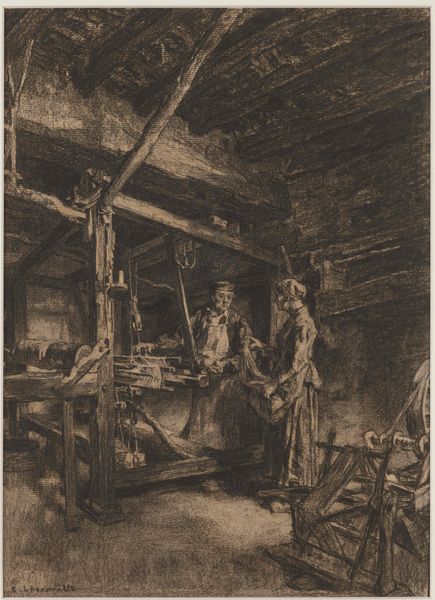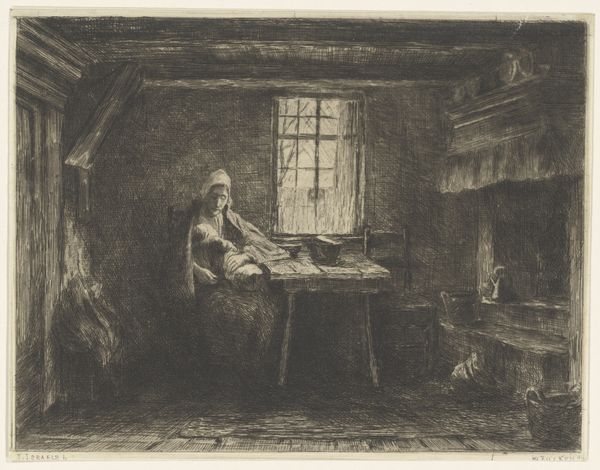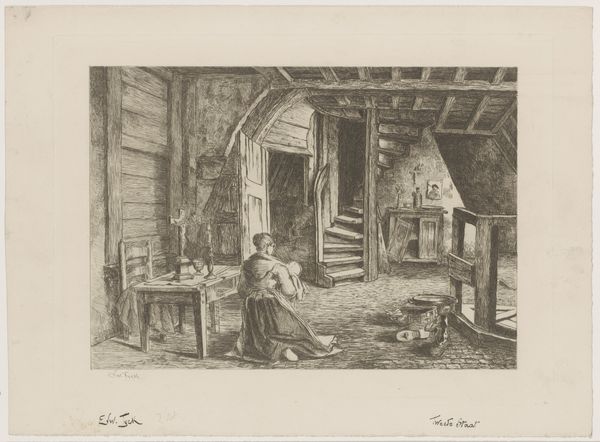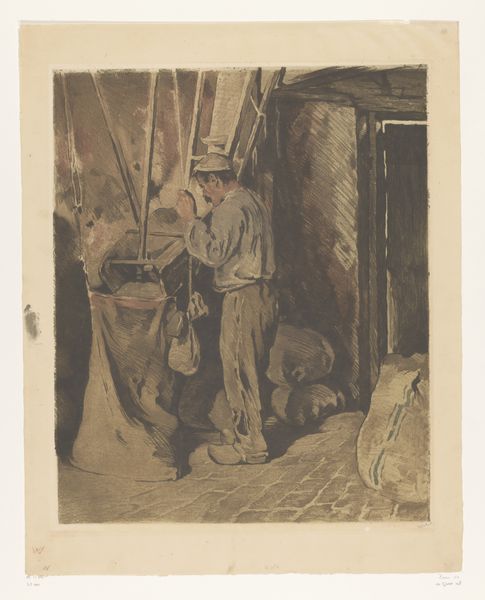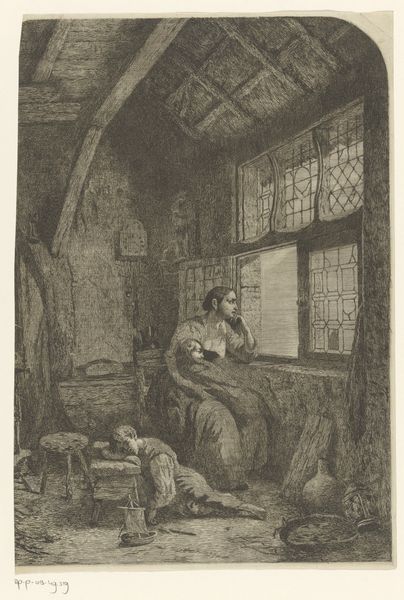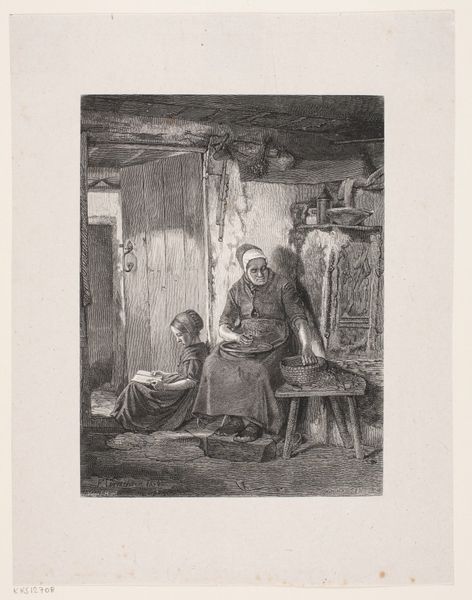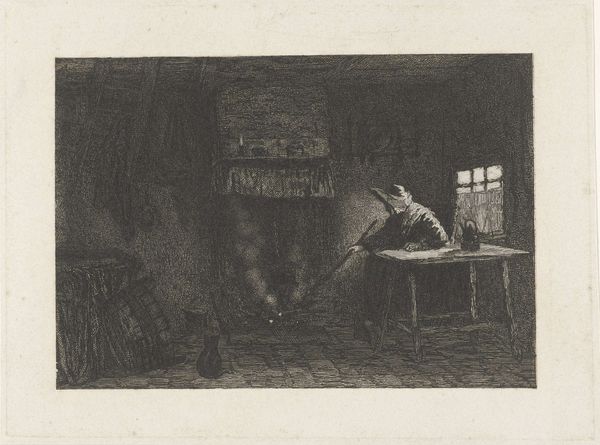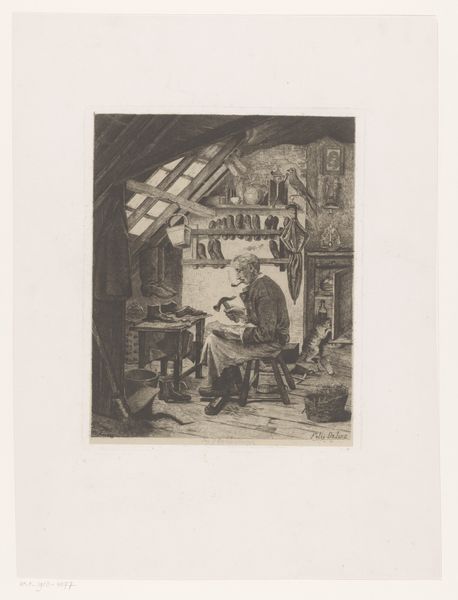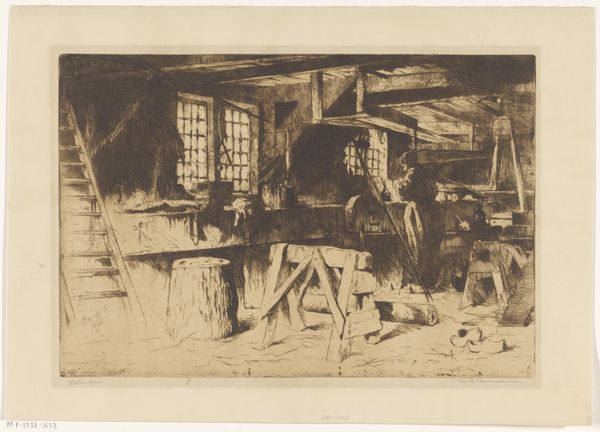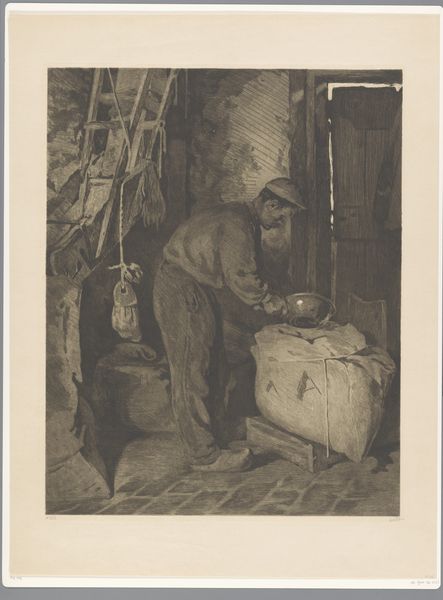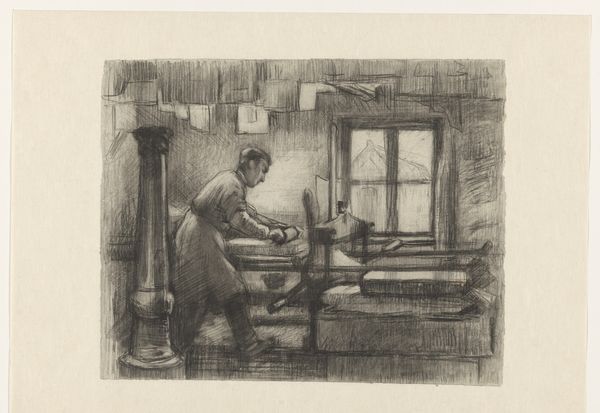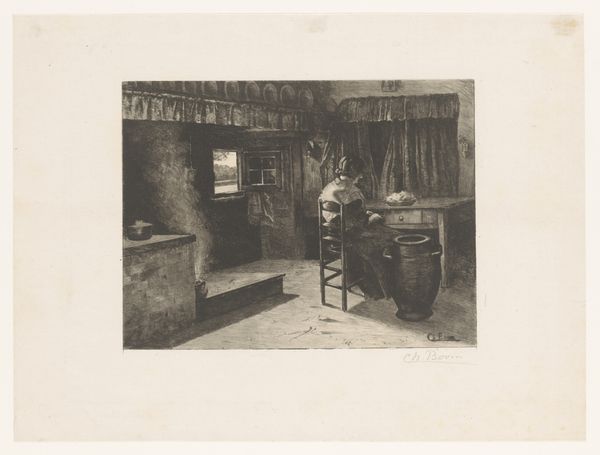
drawing, print, etching, intaglio, graphite
#
pencil drawn
#
drawing
# print
#
etching
#
intaglio
#
pencil sketch
#
landscape
#
charcoal drawing
#
pencil drawing
#
graphite
#
genre-painting
#
realism
Copyright: National Gallery of Art: CC0 1.0
Julian Alden Weir created the etching we see here, 'The Blacksmith's Shop,' sometime around the turn of the century. It’s a scene of labor and industry, but it also speaks to the changing place of work in American life. The image depicts a blacksmith at his anvil, surrounded by the tools of his trade. This was a period of rapid industrialization in the United States. Many traditional crafts were giving way to factory production. Blacksmiths, who once held a central role in the community, found themselves increasingly marginalized. Weir, who was associated with the American Impressionist movement, often depicted rural scenes and traditional ways of life. Weir's choice of subject matter reflects a broader cultural nostalgia for a pre-industrial past, which had an influence on the art institutions of the time. To understand Weir’s print, we can look at how institutions like art schools shaped artists' views of labor. We can also study how cultural commentators viewed the changing landscape of American work.
Comments
No comments
Be the first to comment and join the conversation on the ultimate creative platform.
